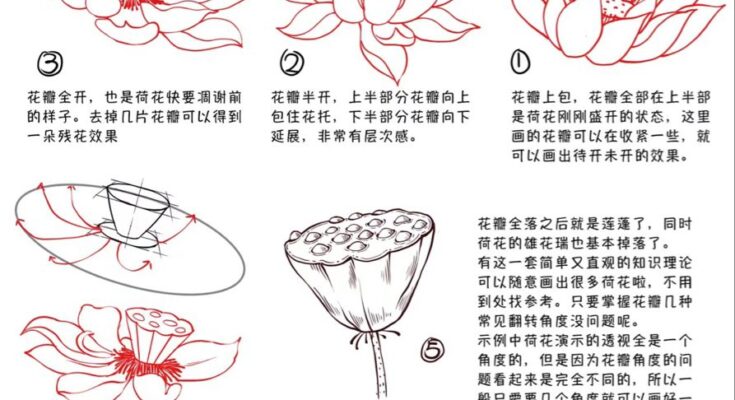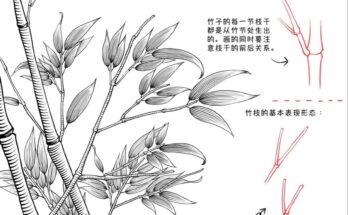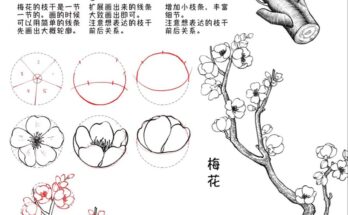Unfolding Serenity: A Step-by-Step Guide to Drawing Lotus Flowers

Dive into the tranquil art of botanical illustration with our latest tutorial, a comprehensive guide to drawing the exquisite lotus flower in all its stages of bloom. Crafted for artists of all skill levels, this detailed resource offers step-by-step illustrations and expert techniques to help you capture the lotus’s graceful petals, vibrant center, and unique seed pod. Whether you’re a beginner seeking to hone your skills or an experienced illustrator inspired by nature, this guide will help you bring the serene beauty of the lotus to your artwork.
The tutorial begins with the foundational process of sketching the lotus’s basic structure, starting with a simple cup-like shape to represent the flower’s initial form. Red ink overlays guide you through the progression, adding radial lines to indicate petal placement and flow. Step-by-step visuals demonstrate the transformation from this basic outline to a fully bloomed lotus, with annotations highlighting the importance of observing the natural curvature and overlap of petals. The process encourages light initial sketches to allow for adjustments, ensuring a fluid and organic development as you refine each layer.
Next, the guide focuses on the detailed rendering of the lotus’s petals and center. The images illustrate the build-up from the outer petals inward, with red guidelines showing how to achieve the flower’s characteristic symmetry and gentle undulation. Detailed sketches depict the vibrant stamen and pistil at the heart of the bloom, with tips on using fine lines and stippling to suggest texture and depth. The tutorial includes variations in petal arrangement, encouraging artists to experiment with shading techniques—such as light hatching—to create a gradient that mimics the lotus’s natural translucence and highlights its luminous quality.
The tutorial then explores the lotus seed pod, a distinctive feature of the plant. Starting with an oval shape, the images guide you through adding the pod’s textured surface and circular seed openings. Red overlays illustrate the progression from a basic form to a detailed pod, with notes emphasizing the use of cross-hatching to convey its rough, segmented texture. Additional sketches show the pod in different stages—both attached to the flower and standalone—providing insight into capturing its unique structure. The guide includes practical advice, such as studying live lotuses or photographs to perfect the balance of smooth petals and rugged pods.
The final section brings the elements together, showcasing a fully rendered lotus composition with blooms and pods in harmony. The illustrations highlight the interplay of line work and shading to create depth, with tips on positioning flowers and pods naturally above the waterline. Annotations provide further guidance, such as adjusting the angle of petals to suggest a gentle breeze and varying the density of details for a realistic effect. The tutorial encourages patience and observation, noting that understanding the lotus’s growth cycle is key to mastering this art form.
Enriched with insights on technique and inspiration, this guide is a valuable resource for artists eager to expand their botanical illustration skills. Whether you’re creating a peaceful pond scene or a standalone floral study, these methods will elevate your artwork. Grab your sketchbook, follow along with these detailed illustrations, and let the serene elegance of the lotus inspire your next masterpiece! Stay tuned for more tutorials, and share your creations with our vibrant community. Happy drawing!



